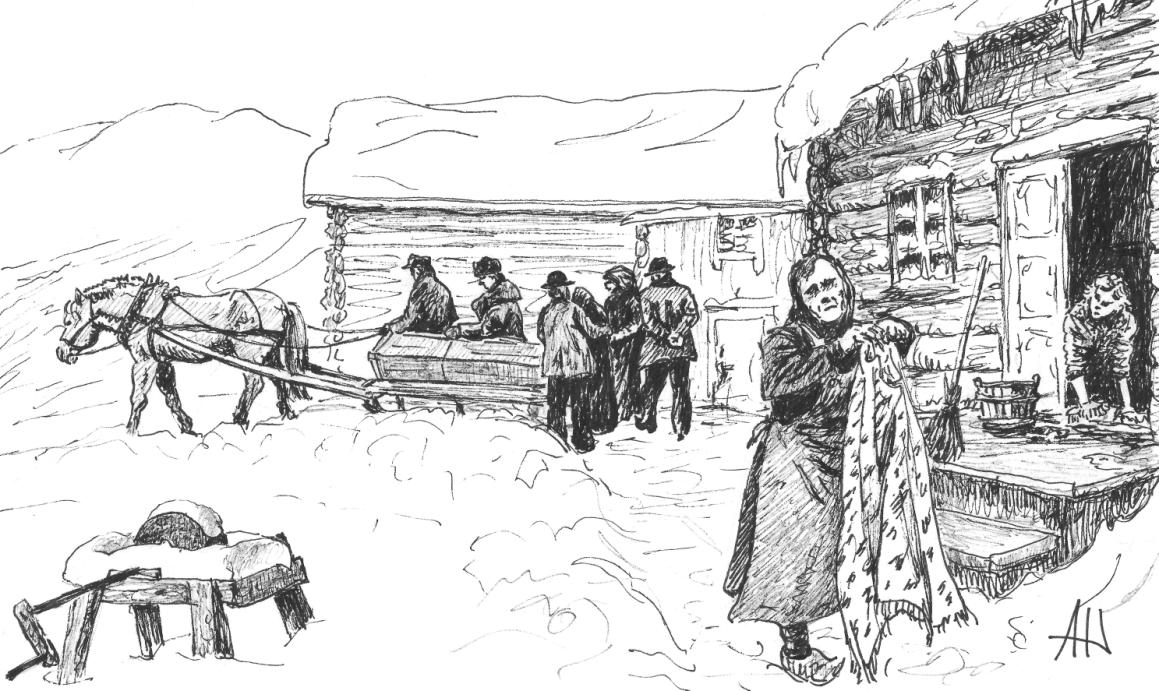Photo: Wash out after someone who had died on "Legd". Drawing by Amund Hagen via Historiefortelleren.no
"Legd" dates from the 13th century and was a form of care for the dependent and the poor, where they were moved from farm to farm in turn (also called "house-walking" back in the Viking Age). Here they got food and housing, for example for 2 weeks, before they were sent on to the next farm.
This was enshrined in the Frostating Act in 1276, and those who took in people in this way received a certain amount of support. The scheme varied according to the state of health. Those with the worst health were given set routes that had to be followed, while those who were partly able to work were auctioned off in a reverse auction. The person who offered the least in remuneration (ie money in support) received the contract for the partially able-bodied person on the assumption that he could work a little - and thus had a value.
However, it was important not to sit with the dependent when he / she died, then one had to pay funeral costs!
The Poverty Commission
From the middle of the 18th century, a "poor commission" was appointed in each settlement. This consisted of the priest and sheriff as well as a couple of high-ranking people. It was these who decided who should get help, and how. The requirements for getting help were gradually tightened, among other things one had to have a right of residence in the municipality (at least 3 years of work). It was a shame to get this kind of help.
Voluntary pension scheme
In 1906, there was a voluntary arrangement between employee and employer to set aside a small amount for retirement. The state was also somewhat involved. But the scheme was little used because people needed what they earned for a living, so it received little response. In 1935, only every 4th employee was a member of a trade union - which governed the scheme.
Towards today's social security schemes
In 1936, the Old Age Insurance Act came into force. This was means-tested, so there were many who did not get it. For example, those who had housing on the farms or other income.
1 1939 came Unemployment Insurance. During the war, many of the social benefits were taken away, but after the war there was probably more unity and a social attitude among the people. In 1946 came child benefit (we needed more people).
In 1957, health insurance came to everyone. In 1959, there was an old-age pension for everyone without a means test. In 1961 came the disability benefit. In 1967 - National Insurance from 70 years, which was lowered to 67 years in 1973.

